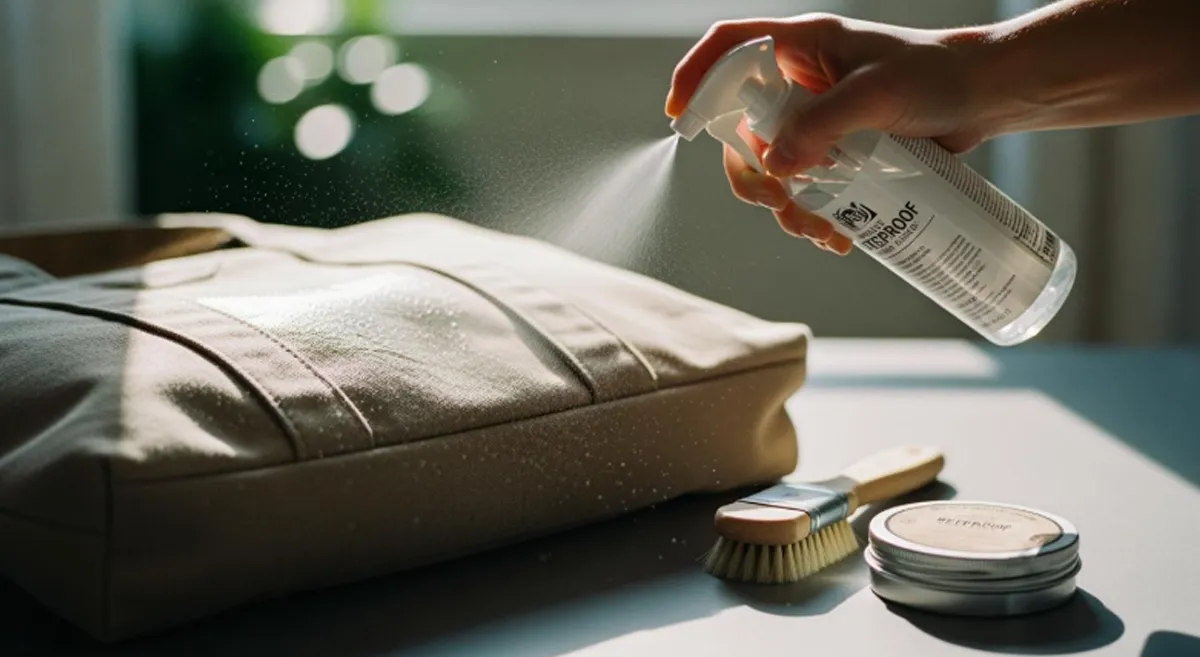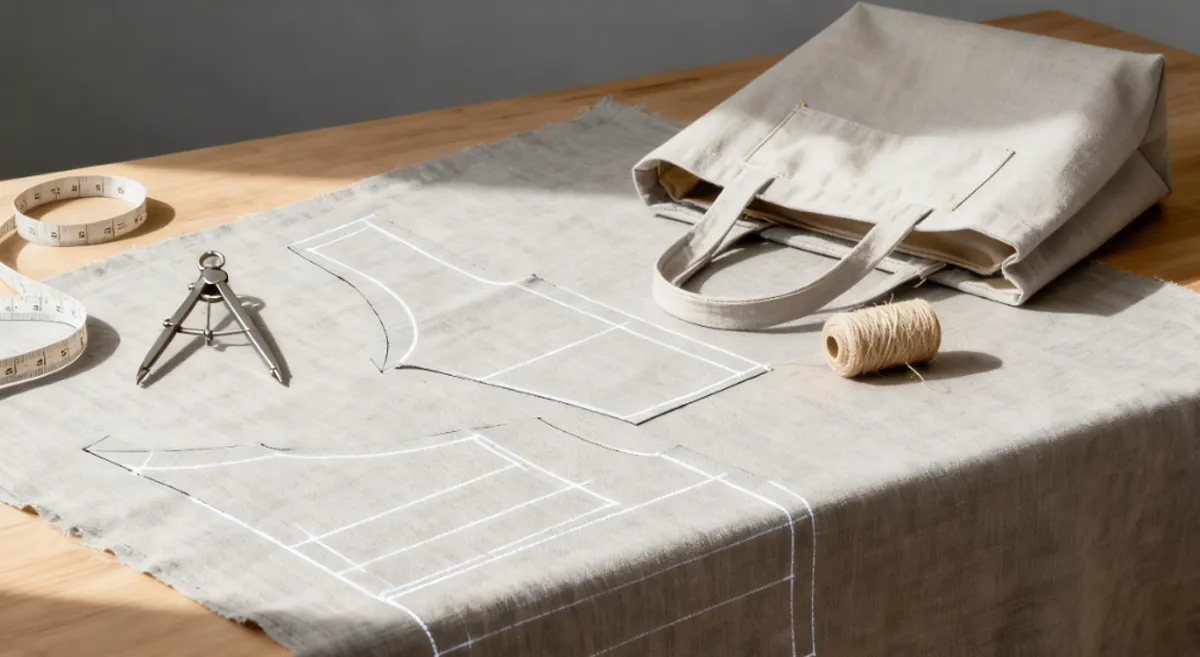You can create your own unique jute bag at home. Wondering how to paint jute bags with easy steps? You just need a few supplies and a bit of creativity. Painting feels relaxing and brings a personal touch to your diy project.
I have always loved the look of hand-painted bags. I think it adds a personal touch that you just cannot get with a machine-made product. Each bag was slightly different and had a unique, handmade feel.
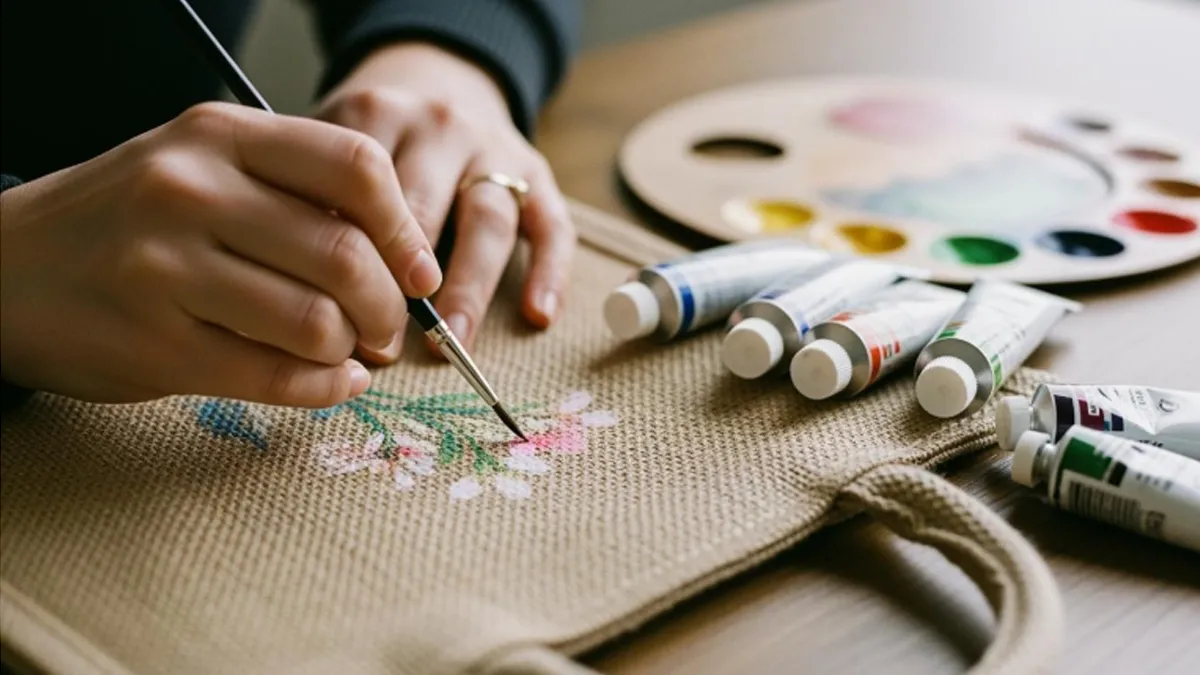
A painted bag makes a thoughtful gift or a fun accessory for yourself.
Key Takeaways
- Get the things you need like a clean jute bag, fabric paints, and brushes before you start.
- Pick the best paint for jute, like Lumiere or Neopaque, so your colors stay bright and last long.
- Clean your jute bag first and put on a primer to make the surface smooth for painting.
- Use masking tape to make straight lines and sections on your bag. This helps your bag look neat and professional.
- Try easy design ideas like stitching, stamping, or tie-dye to make your bag special.
- Put paint on in thin layers so it does not crack and covers well. Let each layer dry before you add more paint.
- Protect your painted bag by sealing it with a fabric medium or clear spray. This keeps your design safe and makes your bag last longer.
- Add final touches like embroidery or accessories to make your jute bag stand out and look cool.
Materials for Painting Jute Bags
Before you start to paint jute bags, you need to gather the right materials. Having the right supplies makes the process smoother and helps your design look great. Let’s break down what you’ll need.
Essential Supplies
You don’t need a lot to get started. Here’s a simple list to help you prepare:
- Clean jute bag (plain and uncoated works best)
- Fabric paints or acrylic paints with fabric medium
- Paintbrushes (flat and round)
- Water cup for rinsing brushes
- Palette or plate for mixing colors
- Paper towels or rags for cleanup
You can find most of these items at a craft store. Make sure your jute bag is plain and free from any plastic coating. This helps the paint stick better.
Choosing Paint for Jute
Picking the right paint is important. Jute has a rough, natural texture, so you want a paint that covers well and stays bright. Lumiere and Neopaque fabric paints work really well on jute. These paints have more pigment than regular paints, so your colors look bold and last longer. They also cover dark jute fabric nicely. If you use acrylic paint, mix it with a fabric medium. This keeps the paint flexible and stops it from cracking when you use your bag.
Tip: Test your paint on a small corner of the jute bag first. This helps you see how the color looks and how the fabric reacts.
Optional Tools
You can use extra tools to make your painting easier and your designs more interesting. Here’s a table to show how different tools help:
| Tool/Material | Impact on Final Result |
|---|---|
| Fabric Paints | Flexible and lasting look that neither fades nor cracks. |
| Acrylic Paints | Mixed with fabric medium to prevent cracking and enhance durability. |
| Fabric Pens and Markers | Offer enhanced control for fine and intricate designs. |
| Flat Brushes | Suitable for covering larger areas and creating smooth backgrounds. |
| Foam Brushes | Help create textured designs. |
| Round Brushes | Ideal for fine outlines and letter painting. |
| Stencils and Stamps | Used for creating repeatable logos and designs. |
| Sealers | Protect the design and ensure longevity of the paint. |
You might want to try stencils if you like neat shapes or repeating patterns. Fabric pens and markers help you add small details or write names. Sealers keep your painted jute bag looking fresh, even after many uses.
With these materials, you’re ready to start your creative journey. Painting on jute is fun and easy when you have the right tools!
Prepare Your Jute Bag
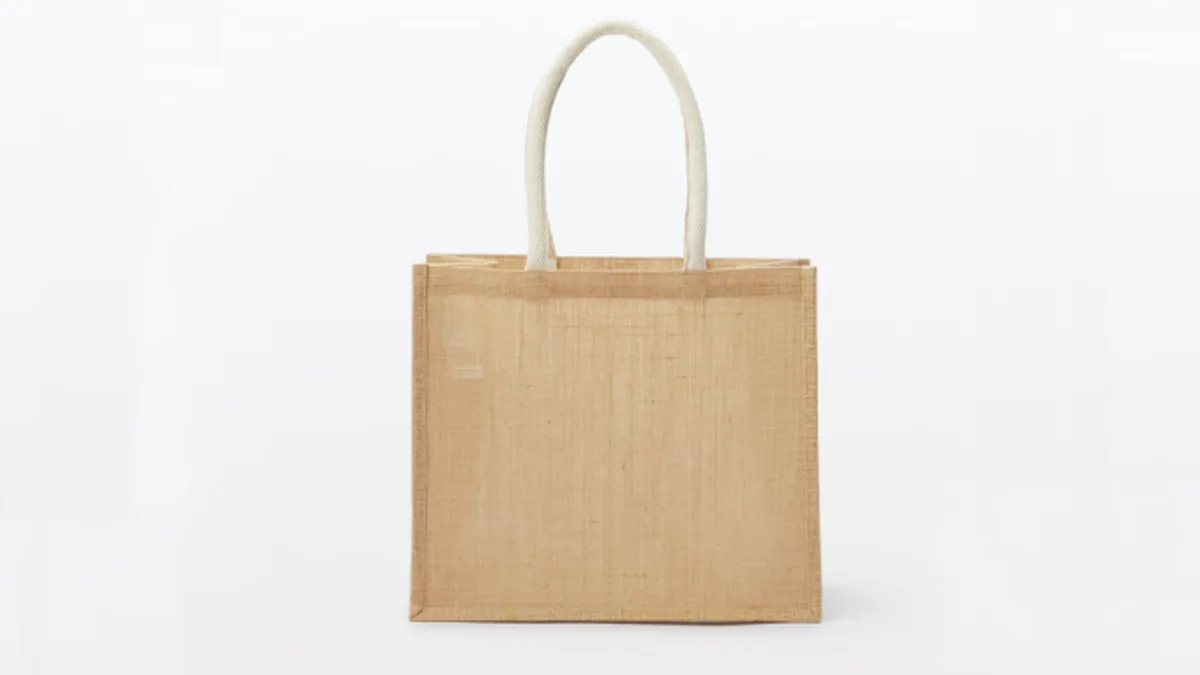
Getting your jute bag ready is the first step to a great painting project. If you take a little time to prepare, your design will look brighter and last longer. Let’s walk through each step together.
Clean the Surface
You want your jute bag to be clean before you start painting. Dust and dirt can make the paint look patchy or cause it to peel off. Here’s a simple way to get your bag ready:
- Shake the bag to remove loose dust and debris.
- Use a soft brush to gently sweep the surface.
- Stretch the jute bag flat on your table or secure it to a frame. This keeps the fabric smooth and helps you paint evenly.
- Apply a thin layer of primer or gesso. This step seals the fibers and gives you a smoother base for painting.
- Wait until the primer dries completely. If you rush, the paint might smudge or soak in unevenly.
Tip: If you skip the primer, your paint might bleed into the fabric. Take your time and let each layer dry for the best results.
Set Up Workspace
A good workspace makes painting more fun and keeps you safe. Here’s a quick guide to setting up your area:
| Safety Tip | Description |
|---|---|
| Clean Workspace | Keep your work area tidy and free of paint residue or dust. |
| Personal Protection | Wear gloves if you use strong paints or chemicals. |
| Waste Management | Use a lined metal trash can for art waste and throw it away safely. |
| Hazardous Substances | If you use any solvents, choose odorless ones and keep them in a metal container. |
| Personal Hygiene | Don’t put brushes in your mouth and wash your hands after painting. |
You can cover your table with old newspaper or a plastic sheet. This makes cleanup easy and protects your furniture. Make sure you have good light so you can see your design clearly.
Masking and Taping
If you want sharp lines or want to block off parts of your jute bag, masking tape is your best friend. Here are some ways to use it:
- Masking tape helps you create clean, straight edges for your design.
- You can section off areas you don’t want to paint.
- Try making stripes, borders, or geometric shapes with tape.
Peel the tape off slowly after the paint dries. This keeps your lines crisp and stops the paint from peeling up with the tape.
Note: Always press the tape down firmly so paint doesn’t seep underneath.
Now your jute bag is ready for your creative touch! With a clean surface, a safe workspace, and some smart masking, you’ll get a result you can be proud of.
Plan and Decorate a Jute Bag
Decorating jute bags is where your creativity shines. You can turn a plain bag into something special with just a few simple ideas and some planning. Let’s look at how you can decorate a jute bag with fun and easy steps.
Simple Design Ideas
You don’t need to be an artist to make your bag look amazing. Here are some beginner-friendly ideas you can try:
- Try different stitches like chain, satin, or cross-stitch to add patterns and texture.
- Use stamping to make unique designs. Alphabet stamps let you add your name or a favorite word.
- Create a tie-dye effect with fabric dye and rubber bands for bold, colorful patterns.
- Attach patches or badges to show off your interests or favorite quotes.
- Add lace or trim for a vintage look and a touch of elegance.
Tip: Mix and match these ideas to decorate a jute bag that feels truly yours!
Use Stencils or Sketches
Stencils and sketches help you get neat, repeatable patterns. You can use them to decorate a jute bag even if you don’t feel confident drawing freehand. Here’s a simple way to use stencils:
- Gather your supplies: jute bag, stencil, thick paper, craft paint, and tape.
- Place a thick piece of paper inside the bag. This stops paint from soaking through.
- Tape the stencil onto the bag where you want your design.
- Dab paint inside the stencil with a foam brush. Don’t use too much paint at once.
- Carefully remove the stencil and let your bag dry.
If you like to sketch, draw your design lightly with a pencil before painting. This gives you a guide and helps you stay on track.
Color Selection
Choosing the right colors makes your design pop. Jute has a natural, earthy tone, so bright colors stand out well. You can mix 1 part latex paint with 1 part fabric softener before painting. This trick helps the paint soak into the fibers and keeps your bag soft.
Here are some color tips for your project:
- Pick two or three colors that look good together.
- Try bold shades like red, blue, or yellow for a lively look.
- Use white or metallics for highlights and details.
Remember: Test your colors on a scrap of jute first. This helps you see how they look before you decorate a jute bag.
With these ideas, you can plan and decorate a jute bag that matches your style. Have fun and let your imagination lead the way!
How to Paint Jute Bags Step by Step
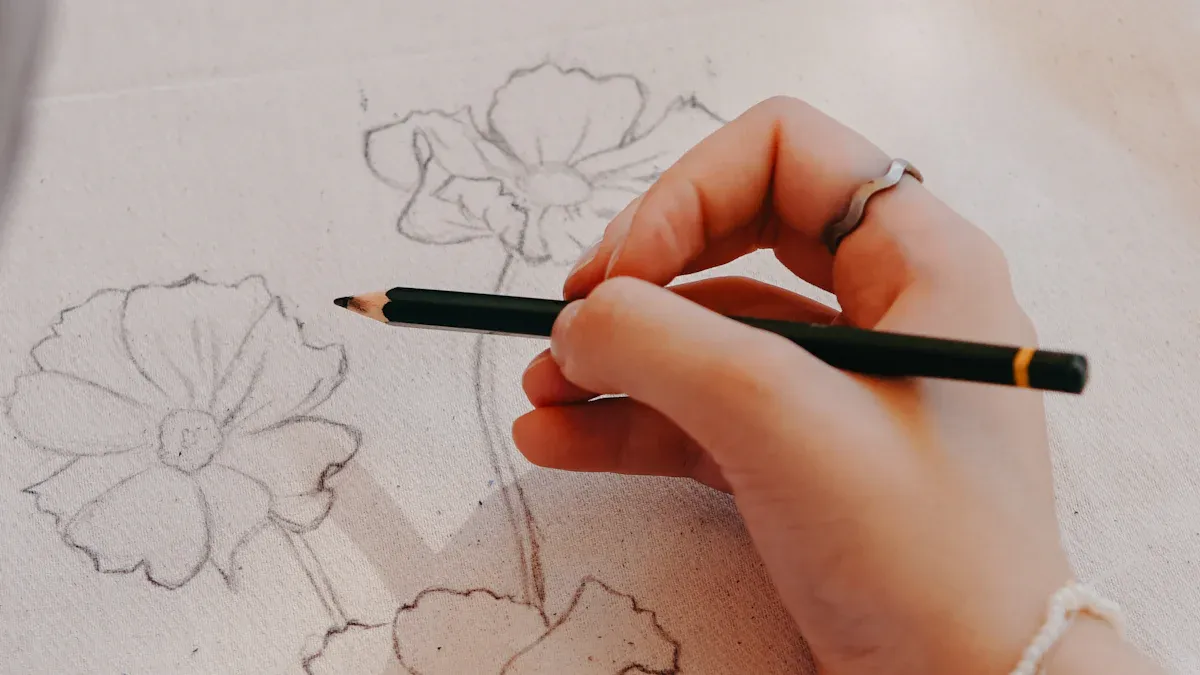
Painting your own jute bag is easier than you think. You just need to follow a few simple steps. Here’s a clear guide on how to paint jute bags so you get bright colors and a design that lasts.
Apply Paint in Layers
Start with a clean, smooth bag. If you want the best results, always use thin layers of paint. Thick paint can crack or peel off. Here’s how you do it:
- Dip only the tip of your brush into the paint. This helps you control how much paint goes on the bag.
- Brush on a thin, even coat. Let it dry before you add another layer. Most designs look best with two or three layers.
- Watch for drips. If you see any, smooth them out right away so they don’t dry and ruin your design.
Tip: Thin layers dry faster and stick better to the jute. You get brighter, more vibrant colors this way.
You can use masking tape to make clean lines or block off areas you don’t want to paint. Stencils help you create neat patterns or shapes. Secure your stencil with tape so it doesn’t move. Dab paint gently over the stencil with a sponge or brush, then lift the stencil off carefully.
Here’s a quick table to show the step-by-step process many crafters use:
| Step | Hand-Painting Method |
|---|---|
| 1. Preparation | Clean the bag’s surface and trim stray fibers for a smooth painting area. |
| 2. Design | Lightly sketch your design with a pencil to guide your painting. |
| 3. Application | Start painting with light colors first, allowing each layer to dry before adding more. |
| 4. Finishing | Use a fabric-sealing spray to protect the painted design from damage. |
Use Brushes and Sponges
You can use different tools to get different effects on your jute bag. Brushes work well for lines and details. Sponges are great for texture and blending.
- Gather your brushes, sponges, and paints. Make sure your workspace is tidy.
- Try different sponges to see which one gives you the look you want. Some sponges make big, bold shapes. Others give a soft, cloudy effect.
- Mix your paints to get the right color. You can add a little water to make the paint smoother.
- Wet your sponge a bit before you use it. This stops it from soaking up too much paint.
- Use a brush or roller to put down a base layer if you want a solid background.
- Dab or pounce the sponge to add texture. You can blend colors or layer them for a cool effect.
- After the paint dries, use a small brush to add details or outlines.
Try using both brushes and sponges on the same bag. You can make your hand-painted jute bag look really unique!
Fix Mistakes
Mistakes happen, but you can fix most of them. Here are some common problems and how to solve them:
- If paint bleeds through the bag, put a piece of cardboard inside before you start. This keeps the paint from soaking through.
- Loose fibers can mess up your design. Use a disposable razor to shave off any fuzzy spots before you paint.
- If your lines look messy, outline your design with a gel pen first. This helps stop the paint from spreading.
- Use a brush instead of a pen for smoother, more even color.
- If you spill or smudge paint, wipe it up right away with a damp cloth. Let the area dry before you try again.
Note: Always let each layer dry before you add more paint. This keeps your design sharp and stops colors from mixing by accident.
Learning how to paint jute bags takes a little practice, but you’ll get better with each project. Use these tips to make your next paint jute bags project easy and fun. Soon, you’ll have a bag that shows off your style and creativity!
Dry and Seal Your Painted Bag
Drying Time
You finished painting your bag. Now, you need to let it dry. This step is important if you want your design to last. Place your jute bag on a flat surface. Make sure it stays in a spot where no one will touch it. Good airflow helps the paint dry faster. You can open a window or use a fan nearby.
Most fabric paints dry to the touch in about one hour. For best results, wait at least 24 hours before you move or use the bag. If you painted thick layers, give it extra time. Touch the painted area gently to check if it feels dry. If it feels sticky, let it sit longer.
Tip: Don’t rush this step. If you handle the bag too soon, the paint might smudge or peel.
Sealing the Design
After your bag dries, you want to protect your artwork. Sealing keeps your design looking bright and helps it last longer. You have a few good options for sealing painted jute bags:
- Use a fabric medium as a sealant. This product mixes with your paint or goes on top after painting. It helps the paint stick to the fibers and stay flexible.
- Try a clear spray made for fabric or crafts. Hold the spray about 12 inches from the bag and use light, even coats. Let each coat dry before adding another.
Sealing your design is easy. Just follow the directions on your chosen product. Always work in a well-ventilated area when you use sprays. If you want extra protection, apply two thin coats instead of one thick coat.
Note: Sealing your painted jute bag helps it resist water and fading. Your design will look fresh even after many uses.
Now your bag is ready to show off! You can use it for shopping, as a gift, or just to brighten your day.
Finishing Touches
You have painted your bag and sealed your design. Now, you can make your jute bag stand out even more with some creative finishing touches. These extra steps help your bag look unique and last longer.
Add Embroidery or Fabric
You can add embroidery or fabric pieces to your bag for extra style. Try different stitches like chain, satin, or cross-stitch. These stitches create cool patterns and textures. You might want to sew on some dried flowers, beads, or sequins for a bit of sparkle. Some people even use vintage jewelry, like brooches or earrings, to give their bag a special flair. Rick rack and lace trims add a pop of color and a fun, old-fashioned look.
- Try chain, satin, or cross-stitch for patterns.
- Sew on beads, sequins, or dried flowers for texture.
- Use vintage jewelry or rick rack for a unique touch.
- Collect ribbons or lace trims to decorate your jute bag.
Tip: Mix embroidery with your painted design. This makes your bag look even more interesting and personal.
Attach Accessories
Accessories can make your bag more useful and stylish. You can attach colorful ribbons or trims to the edges. Decorative buttons or zippers can replace the original handles or closures. Iron-on patches or appliques let you show off your favorite designs. Beads and sequins add sparkle and help your bag catch the light.
- Add ribbons or trims for decoration.
- Use buttons or zippers for a new look.
- Try patches or appliques to personalize your bag.
- Sew on beads or sequins for extra shine.
Adding accessories is a fun way to show your style and make your jute bag one of a kind.
Care Tips
You want your painted jute bag to look great for a long time. Take care of it with these simple tips:
- Do not soak your bag in water. This can stretch the fabric and change its shape.
- Avoid putting your bag in the washing machine. Machine washing can weaken the fibers.
- Clean your bag with a damp cloth. Gently wipe away dirt or stains.
Remember: Never dunk your jute bag in water or toss it in the washer. A little care keeps your bag looking fresh and bright.
With these finishing touches, your jute bag will look amazing and last longer. Enjoy showing off your creative work!
Troubleshooting and Pro Tips
Common Issues
Painting on jute can feel tricky sometimes. You might see paint bleeding, uneven colors, or fuzzy lines. Don’t worry! You can fix most problems with a few simple tricks.
- If your paint bleeds, check if you used too much water or paint. Try using less paint on your brush next time.
- Uneven coverage happens when the fabric is not smooth. Always stretch your bag flat before you start.
- Fuzzy lines can appear if the jute fibers are loose. Trim any stray threads with small scissors before painting.
- Paint soaking through? Place a piece of cardboard inside the bag to stop leaks.
Tip: Always let each layer dry before adding more paint. This helps keep your design sharp and bright.
Long-Lasting Results
You want your painted bag to look great for years. The right paint and good prep make a big difference. Here are some expert tips:
- Acrylic paints last a long time and do not fade easily.
- Latex paints give you bright colors and keep your bag flexible.
- Prepare your jute bag well before painting. Clean and prime the surface for best results.
- Let your bag dry fully before sealing or using it.
Here’s a quick look at how different paints work on jute:
| Paint Type | Longevity | Additional Notes |
|---|---|---|
| Acrylic | Reasonably long (at least 50 years with proper preparation) | Dries fast, durable, and can be refreshed with new coats. |
| Latex | Long-lasting | Vivid colors, easy to apply, and resistant to damage when folded. |
| Jute Fabric | Not recommended for permanent works | Tends to break down over time without proper preparation. |
Note: Proper preparation is the secret to a bag that lasts. Take your time and follow each step.
Creative Ideas
You can make your bag stand out with a few creative touches. Try these ideas to add extra flair:
- Use stencils to create repeating patterns or shapes.
- Mix paint with a little glitter for a sparkly effect.
- Add fabric patches or iron-on designs for more color.
- Try painting with sponges for a cool, textured look.
- Use fabric markers to write your name or a fun message.
Have fun and experiment! Your jute bag can show off your personality and style.
Conclusion
You can make your own jute bag at home. You only need a few supplies to start. Follow these easy steps and see what you can create! If you want to do more, you can work with a professional jute bag manufacturer. This gives you many good options:
- Custom printed bags can help show off your brand.
- Buying many bags at once saves money and helps the environment.
- You get to pick from different styles, handles, and fabrics.
| Service Type | Description |
|---|---|
| Design-based customization | Make bags using your own drawings or ideas. |
| Full customization | Get bags made just the way you want. |
| One-Stop Service | Fast production and quality checks are included. |
We are a professional jute tote bag manufacturer, specializing in custom designs and wholesale orders. Whether you want to create your own eco-friendly bags or place a bulk order, send us an inquiry or call our team anytime — we’re here to bring your ideas to life and support your brand with high-quality, sustainable jute bags.
FAQ
Can I use regular acrylic paint on jute bags?
You can use acrylic paint, but mix it with a fabric medium. This keeps your design flexible and helps prevent cracking. Always test a small area first to see how the paint looks.
How do I stop paint from bleeding on jute?
Place cardboard inside your bag before painting. Use thin layers of paint and let each layer dry. Masking tape helps keep lines sharp and stops paint from spreading.
What is the best way to clean a painted jute bag?
Wipe your bag gently with a damp cloth. Avoid soaking or machine washing. This keeps your design bright and your bag in good shape.
How long should I let my painted jute bag dry?
Let your bag dry for at least 24 hours. If you used thick paint, wait longer. Touch the painted area lightly to check if it feels dry before using.
Can I iron my painted jute bag?
You can iron your bag, but place a cloth over the painted area. Use a low heat setting. This protects your design and keeps the paint from melting.
What kind of designs work best for beginners?
Simple shapes, stencils, and patterns work great. Try hearts, stars, or stripes. You can use stamps or draw with fabric markers for easy decoration.
Do I need to seal my painted jute bag?
Sealing helps your design last longer. Use a clear fabric spray or fabric medium. Apply two thin coats for extra protection.
Can I add embroidery after painting my bag?
Yes! Embroidery adds texture and style. Wait until the paint dries completely before you start stitching. Mix painted designs with thread for a unique look.


